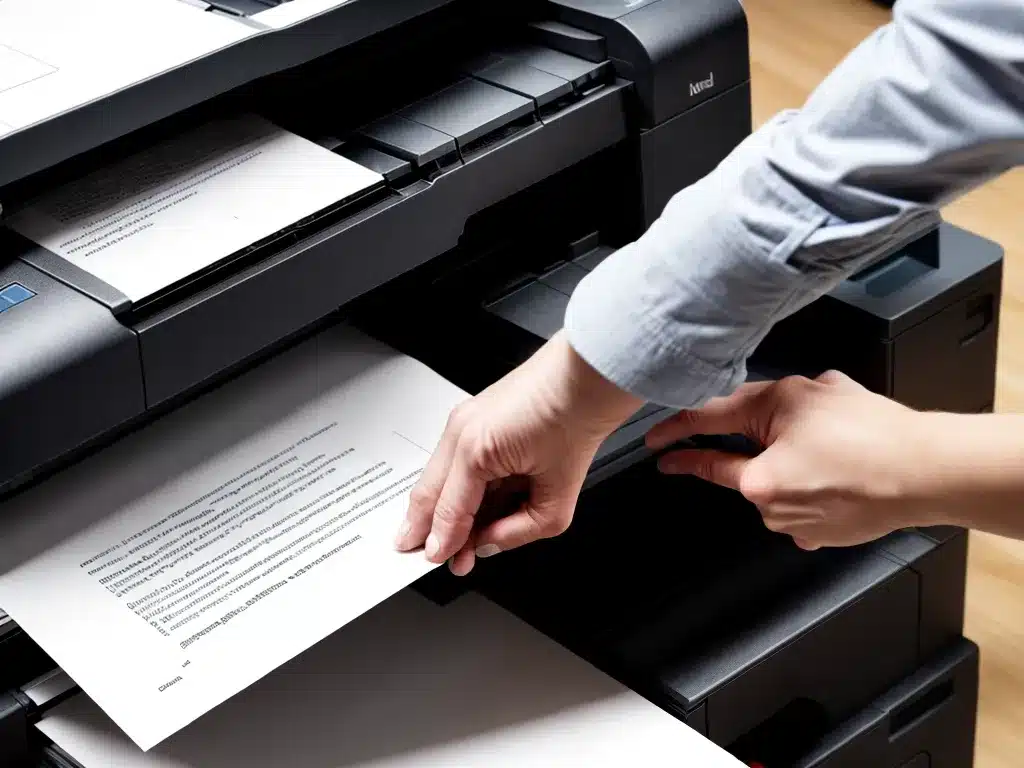
Network printers allow multiple computers to share access to a single printer. While network printing can improve efficiency and reduce costs, it can also lead to frustrating technical issues. Here is a guide to troubleshooting some of the most common network printing problems.
Printer Not Responding
If your networked printer is not responding at all when you try to print, there are a few things to check:
Check the Printer’s Power and Connections
Make sure the printer is powered on. Confirm that the power cable is firmly plugged into the printer and into a working electrical outlet. Check that the network cable is properly connected to the printer’s ethernet port and to your router or network switch. Try disconnecting and reconnecting the cables or swapping the cables if spares are available.
Printer Software and Drivers
Verify that the printer drivers are properly installed on your computer. Open your computer’s Device Manager and expand the “Printers” section – your network printer should be listed without any error icons or warnings. Try uninstalling and reinstalling the printer software and drivers if needed. Updating to the latest driver version can also resolve issues.
Restart Printer and Test Connection
Power cycle the networked printer and your computer. Test the connection to the printer by printing a test or configuration page directly from the printer’s control panel. If the test page prints but you still can’t print from your computer, it indicates a connectivity issue between your computer and the printer.
Print Jobs Stuck in Queue
There are a few potential culprits if your print jobs get stuck and fail to print:
Check for Paper Jams
Inspect inside the printer for paper jams. Paper jams will halt printing until the jammed paper is removed. Check the paper tray, feed rollers and paper output areas. Refer to your printer’s manual for instructions on clearing jams.
Restart Print Spooler
The print spooler manages your computer’s print queue. Restarting the spooler service can clear any stuck or frozen print jobs. On Windows, open the Services utility and restart the Print Spooler service. On Mac, restart your computer.
Delete Stalled Print Jobs
Open your computer’s print queue viewer, either through the printers control panel or the operating system’s settings. Look for stalled print jobs and delete them. This forces the print queue to skip past any corrupted jobs. New print jobs should begin printing normally again.
Poor Print Quality
Blurry text, smudged graphics and faint images point to issues with print quality:
Check Printer Settings
Open the printer properties and confirm the correct paper size, paper type and print quality settings are selected. Settings that don’t match the paper loaded in the printer can degrade quality. Also check for low toner or ink levels if applicable.
Clean the Printer
Clean the interior, print heads and rollers per manufacturer instructions. Debris from paper dust and toner or ink buildup can affect print quality over time. Replace worn rollers and other components like fuser units when needed.
Update Printer Drivers
Outdated printer drivers can sometimes cause print quality issues. Update to the latest driver for your printer model and operating system. Newer drivers are optimized for print quality.
Rule Out Network Issues
Try printing a test page directly from the printer. If it prints correctly but your print jobs from the computer still have quality problems, network lag or interference may be dropping data packets. Switch to a USB or wired network connection if possible for more reliable connectivity.
Troubleshooting network printing problems requires methodically checking hardware connections, software settings and the underlying network infrastructure. Following basic troubleshooting best practices can help isolate and resolve most common printing issues. Don’t hesitate to contact printer support if problems persist after trying these troubleshooting steps. With patience and diligent testing, your office printer network can operate smoothly.












